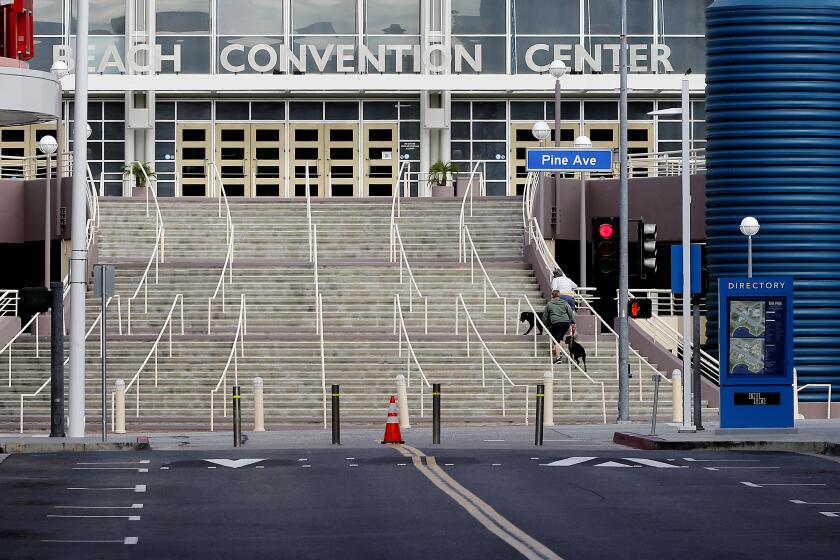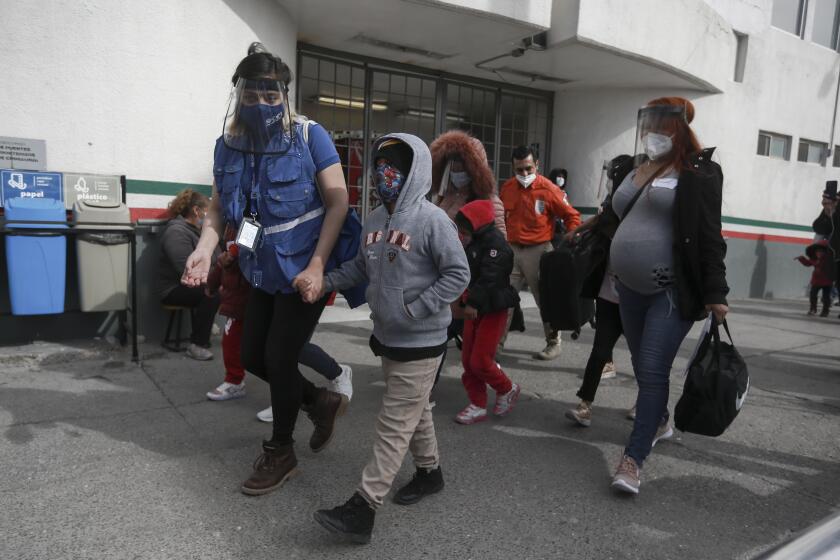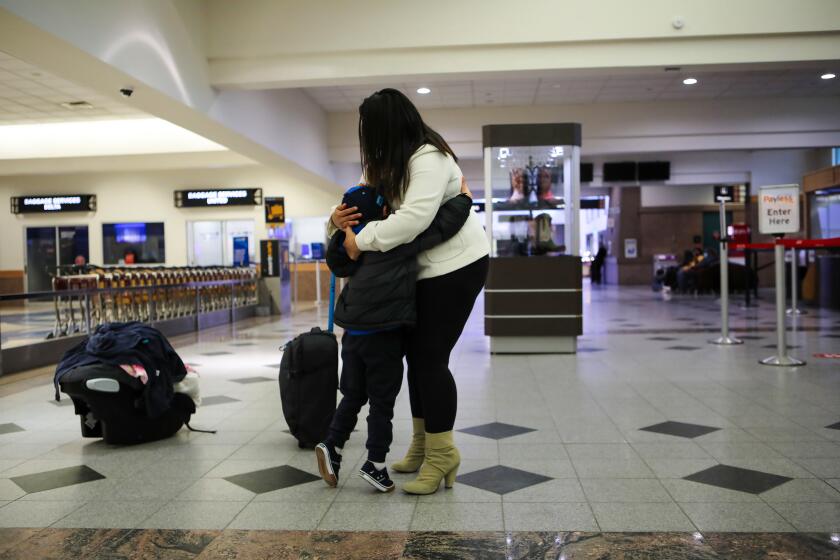Long Beach wants to help Biden house immigrant children. But are city leaders ready?
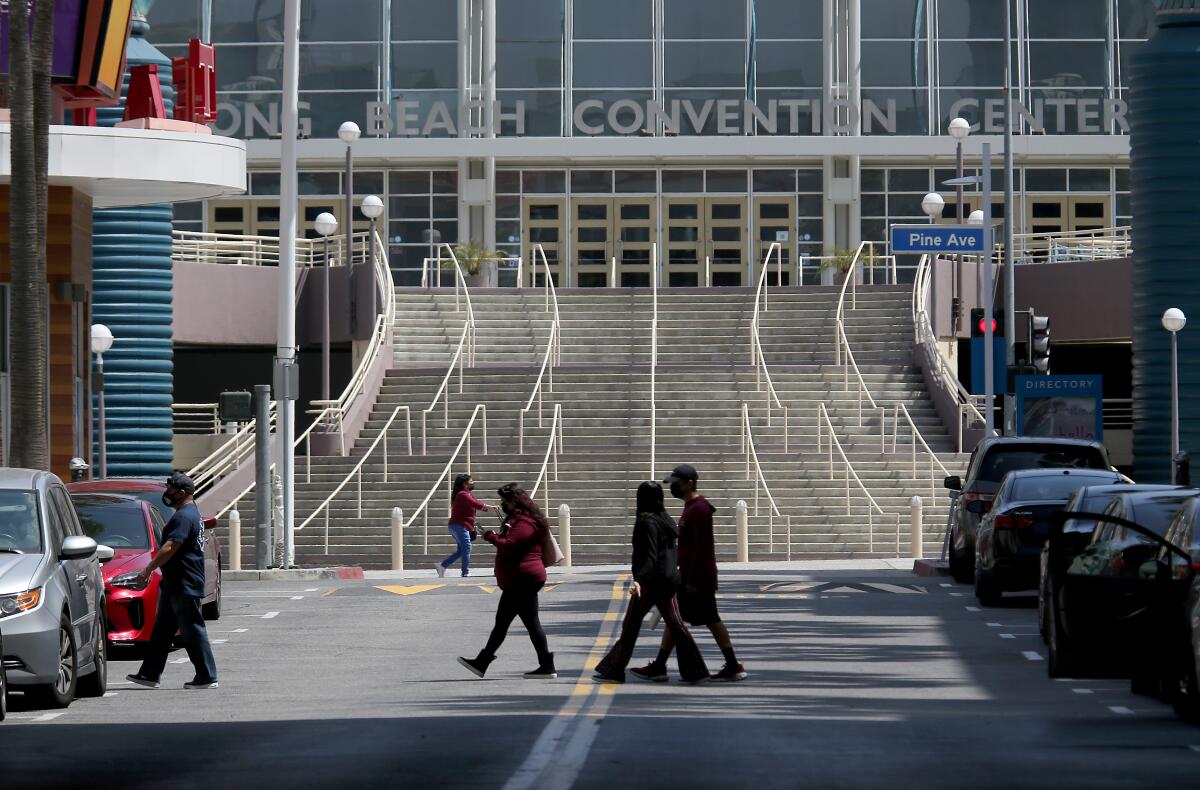
When the White House called Long Beach Mayor Robert Garcia last week to ask if his city would help house unaccompanied immigrant children recently arrived at the U.S.-Mexico border, he didn’t hesitate.
It was personal for Garcia, who emigrated with his family from Peru to the U.S. at 5 years old. The 43-year-old up-and-coming progressive politician empathized with the immigrant children and wanted to help the Biden administration avert a humanitarian crisis.
“Absolutely,” the mayor replied.
Garcia, who chairs Long Beach City Council meetings, supported the move to lease the Convention Center to the federal government and convert it into an emergency shelter for up to 1,000 immigrant children. But leasing the city-owned center requires City Council approval.
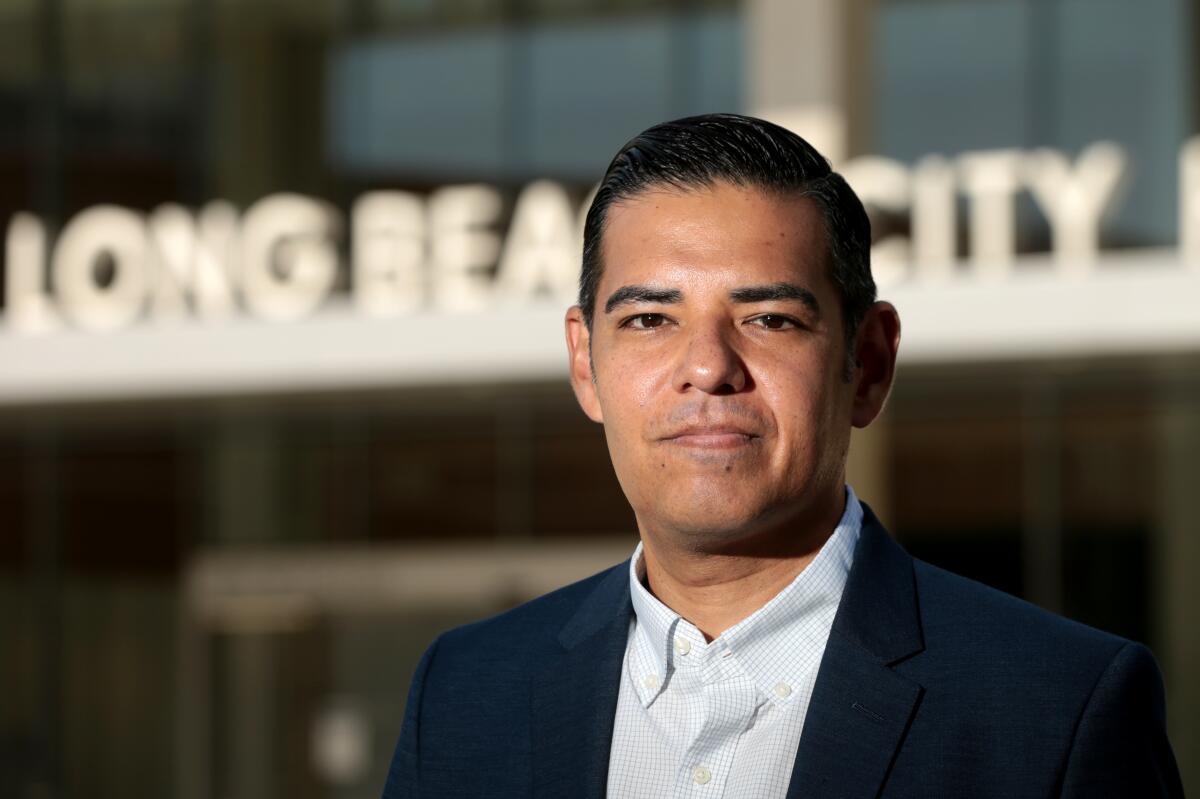
This month, the council members voted unanimously to allow the city to move forward on negotiations with the federal Department of Health and Human Services. The plan is to house sibling pairs as young as 3 years old with an end date of Aug. 2.
The children could show up as soon as this week.
As soon as word got out, Long Beach residents overwhelmed city leaders with offers to help the children.
“Everyone is reaching out … churches, schools, universities, you name it,” Garcia said. “It’s been great to see.”
The city’s welcoming attitude doesn’t come as a surprise, officials said. Long Beach has a history of offering refuge to newly arrived immigrants, having welcomed Cambodians fleeing prosecution in the late 1970s and 1980s.
The city’s contract with the federal Health and Human Services Department would last between 90 and 120 days, until Aug. 2.
“This is what we do,” said Council Member Cindy Allen, one of eight Democrats on the nine-member council.
But some critics, including immigrant rights advocates, question whether city leaders, in their rush to help these children, fully understand the potential risks of partnering with a complex and logistically challenged federal agency that has struggled for years to respond to and appropriately safeguard the increasing numbers of unaccompanied children arriving at the U.S.-Mexico border.
At best, critics believe, city leaders are in over their heads and not asking the right questions to best safeguard the immigrant children. Some also question whether Garcia is assisting a fellow Democratic White House, in part to serve his own political aspirations.
“In spite of purporting to try to provide an alternative to the kids in cages, the city is becoming complicit in the warehousing of children,” said Lauren Heidbrink, an assistant professor at Cal State Long Beach who studies child migration from Central America. “While there is a Democratic president and a Democratic administration in Long Beach, from the perspective of migrant children, they continue to experience more of the same — family separation and detention.”
Heidbrink, who has researched the impact to children in U.S. detention, said the city should be more transparent, ask more questions and push for answers from the Office of Refugee Resettlement, or ORR, an office within the Department of Health and Human Services that Congress has charged with the care and placement of unaccompanied migrant minors.
“City officials are short on details regarding staffing, length of stay and basic child welfare safeguards that will be in place at the Convention Center,” she said. “I don’t think the city is asking the right questions, and they don’t have enough detail to make an informed decision.”
In January and February, border authorities encountered more than 15,000 unaccompanied minors. Is this a significant rise? Here are the facts.
In an interview, Garcia said city leaders had done their homework. He said he‘d had a long conversation with San Diego Mayor Todd Gloria, who also gave the green light to contract with HHS: In late March, ORR officials began housing immigrant children at the San Diego Convention Center. Initially, it received teenage girls. They were later moved out to make room for up to 1,450 younger boys and girls.
Gloria told Garcia to prepare for overwhelming positive support from residents.
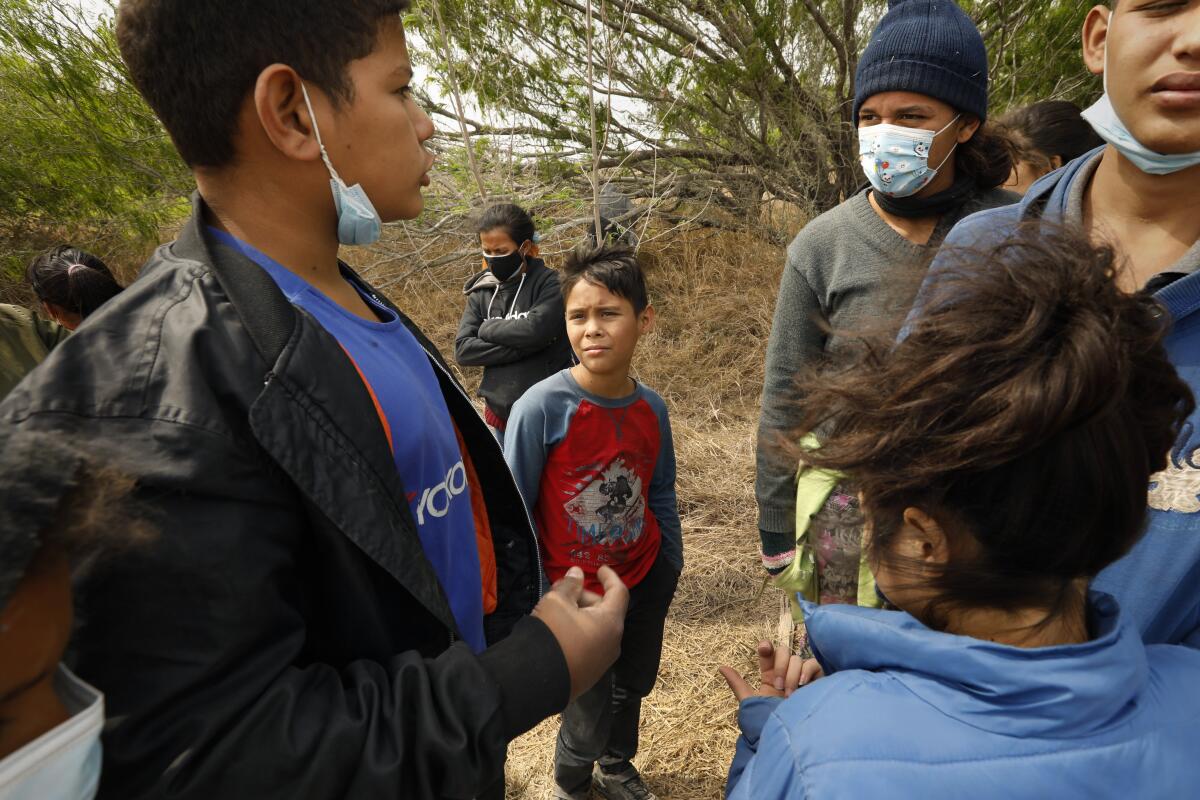
Last month, Border Patrol agents took custody of 18,890 unaccompanied children at the southern border— significantly more than the previous one-month high of nearly 11,900 in May 2019, according to federal data.
Customs and Border Protection, which oversees the Border Patrol, is required to transfer unaccompanied children in its custody to ORR within 72 hours. That process has been stymied as more children have been arriving daily than are able to be transferred out.
As of Tuesday, 18,773 children were in ORR custody after being transferred from Customs and Border Protection. The number of children apprehended by Border Patrol has increased steadily over the last year.
In recent weeks, HHS — with the help of the Federal Emergency Management Agency — opened or announced plans to open several emergency sites in California and Texas. The Pomona Fairplex is the latest site being considered as a temporary intake facility. Current sites include convention centers, churches, and tent and military facilities in Dallas, Houston, San Antonio and El Paso.
Using temporary facilities such as convention centers and military bases is part of the Biden administration’s efforts to speed up the transfer of children out of Border Patrol custody, as the administration works through the lengthy process of increasing state-licensed facilities.
Under international and U.S. law, people have the right to seek asylum at U.S. ports of entry. But the Trump administration turned away the vast majority of children and families seeking asylum.
Most military bases are too remote to hold migrant children, making convention centers a better fit, some immigration experts said.
In Long Beach, city officials have launched an online portal that allows community organizations to apply to help care for and provide services to the children. Ultimately, HHS will have the final say on what organizations it contracts with.
But vetting potential contractors can take months and may ultimately not be feasible to get done within days or weeks after the children arrive, Heidbrink said.
“To me, that’s an indication that there is insufficient communication happening between the city of Long Beach, ORR and FEMA,” she said.
Although some immigrant rights activists say they are happy the community is embracing and welcoming the children, they are critical of city leaders’ decision to house them in less-than-ideal conditions.
Gaby Hernandez, who serves as the executive director for the Long Beach Immigrant Rights Coalition, said children sleeping on the floor behind chain-link fences in holding facilities along the border was unacceptable. But, she said, housing hundreds of children in a convention center isn’t the solution.
“What we are hearing is we should just be fine that this is a better choice than what we are seeing right now — which is kids in cages on the floor,” Hernandez said. “We shouldn’t have to pick between those two bad choices.”
Hernandez and other immigrant rights activists contend that the city is complicit in a process that begins with U.S. immigration policies that separate children from family members at the southern border. Under those policies, children traveling with anyone other than a parent or legal guardian are immediately separated from the adult they are traveling with. The child is then categorized as an unaccompanied minor and becomes a ward of the federal government.
“It may be uncomfortable for them to be shining a light back on the Biden administration’s policies that are separating families and rendering children unaccompanied and leading to the influx at facilities,” Heidbrink said. “But that’s why we elected them — to ask those critical questions and make informed decision.”
Last Saturday, several dozen people rallied outside the Long Beach Convention Center, pressuring City Hall officials to commit to transparency and the humane treatment of the children they plan to house at the center.
Garcia said he had made it clear to federal officials that Long Beach was happy to help but that the Convention Center was a stopgap measure.
“It cannot be the policy of the U.S. government to have ongoing centers like this,” he said. “The plan must be [family] reunification as quickly as possible.”
But reunification has been a challenge for ORR. Unaccompanied children are staying an average of 37 days at Health and Human Services-sponsored facilities, according to the latest data.
The 5-year-old is one of thousands of children and teens who have arrived at the U.S. southern border without a parent or legal guardian since January.
Although Council Member Allen said she was still waiting for answers to some questions posed to federal officials, she took issue with the assertion that she and the other council members were going into a situation without “open eyes.”
“We are going to figure this out and make this work,” she said. “We are going to be good hosts to these children and work our butts off to work with HHS and get these children reunited with their families.”
More to Read
Sign up for Essential California
The most important California stories and recommendations in your inbox every morning.
You may occasionally receive promotional content from the Los Angeles Times.
